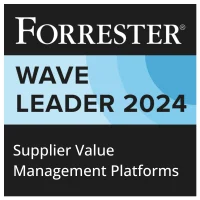Risk Analysis is the systematic process of identifying, assessing, and prioritizing risks to minimize, monitor, and control the probability or impact of unfortunate events, or to maximize the realization of opportunities.
Key Benefits
– Risk Identification: Identifies potential risks early in the procurement process, allowing organizations to address them proactively and minimize potential disruptions.
– Risk Mitigation: Provides strategies and solutions to reduce the impact of identified risks, ensuring smoother procurement operations and protecting the organization from significant setbacks.
– Operational Continuity: Ensures the organization maintains continuous operation by anticipating and addressing risks that could cause supply chain interruptions.
– Improved Decision-Making: Enhances decision-making capabilities by providing data-driven insights and analysis, allowing procurement leaders to make informed decisions with a clearer understanding of potential risks.
– Compliance and Regulatory Adherence: Assists in maintaining compliance with industry standards and regulations by regularly assessing risks related to supplier compliance and market changes, thus reducing the likelihood of legal issues.
Related Terms
– Risk Identification: Identifies potential risks early in the procurement process, allowing organizations to address them proactively and minimize potential disruptions.
– Risk Mitigation: Provides strategies and solutions to reduce the impact of identified risks, ensuring smoother procurement operations and protecting the organization from significant setbacks.
– Operational Continuity: Ensures the organization maintains continuous operation by anticipating and addressing risks that could cause supply chain interruptions.
– Improved Decision-Making: Enhances decision-making capabilities by providing data-driven insights and analysis, allowing procurement leaders to make informed decisions with a clearer understanding of potential risks.
– Compliance and Regulatory Adherence: Assists in maintaining compliance with industry standards and regulations by regularly assessing risks related to supplier compliance and market changes, thus reducing the likelihood of legal issues.
References
For further insights into these processes, explore Zycus’ dedicated resources related to Risk Analysis:
- AI Contract Risk Analysis with InstaReview: Transform Your Risk Management
- Elevate Your Strategy with Advanced Supplier Risk Analysis
- Strategies for Large and Medium Enterprises: Mastering Source-to-Pay Before It’s Too Late
- P2P Touchless Long tail spend: The New Benchmark for World Class P2P Process Efficiency
- Zycus Solution Demo: Automating Procurement Savings for Maximum Efficiency
White Papers
Master the UK Procurement Act 2023: Ensure Compliance & Drive Procurement Excellence

Filter by
Compliant Invoicing
Compliant Invoicing refers to the process of generating, submitting, and managing invoices in adherence with legal, regulatory, and contractual requirements.
Continuity Plan
A Continuity Plan is an organized set of policies and procedures designed to ensure that a company’s essential operations can
Cost Modeling
Cost Modeling in procurement refers to the analysis and estimation of the total cost of ownership of a product or
Contract Audit
Contract Audit is a systematic evaluation of agreements and related documentation to ensure compliance with contractual terms, identify discrepancies, and
Procurement Cycle
The Procurement Cycle refers to the end-to-end process through which an organization identifies its needs, sources suppliers, negotiates contracts, places
Procurement Master Data Management
Procurement Master Data Management is the disciplined approach to managing core, consistent procurement information, including supplier, product, and contract data,






















































